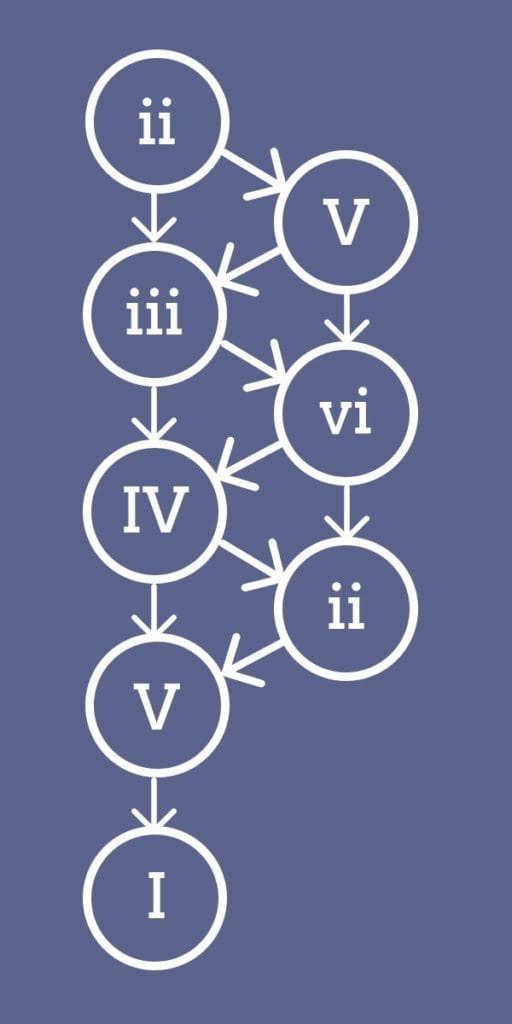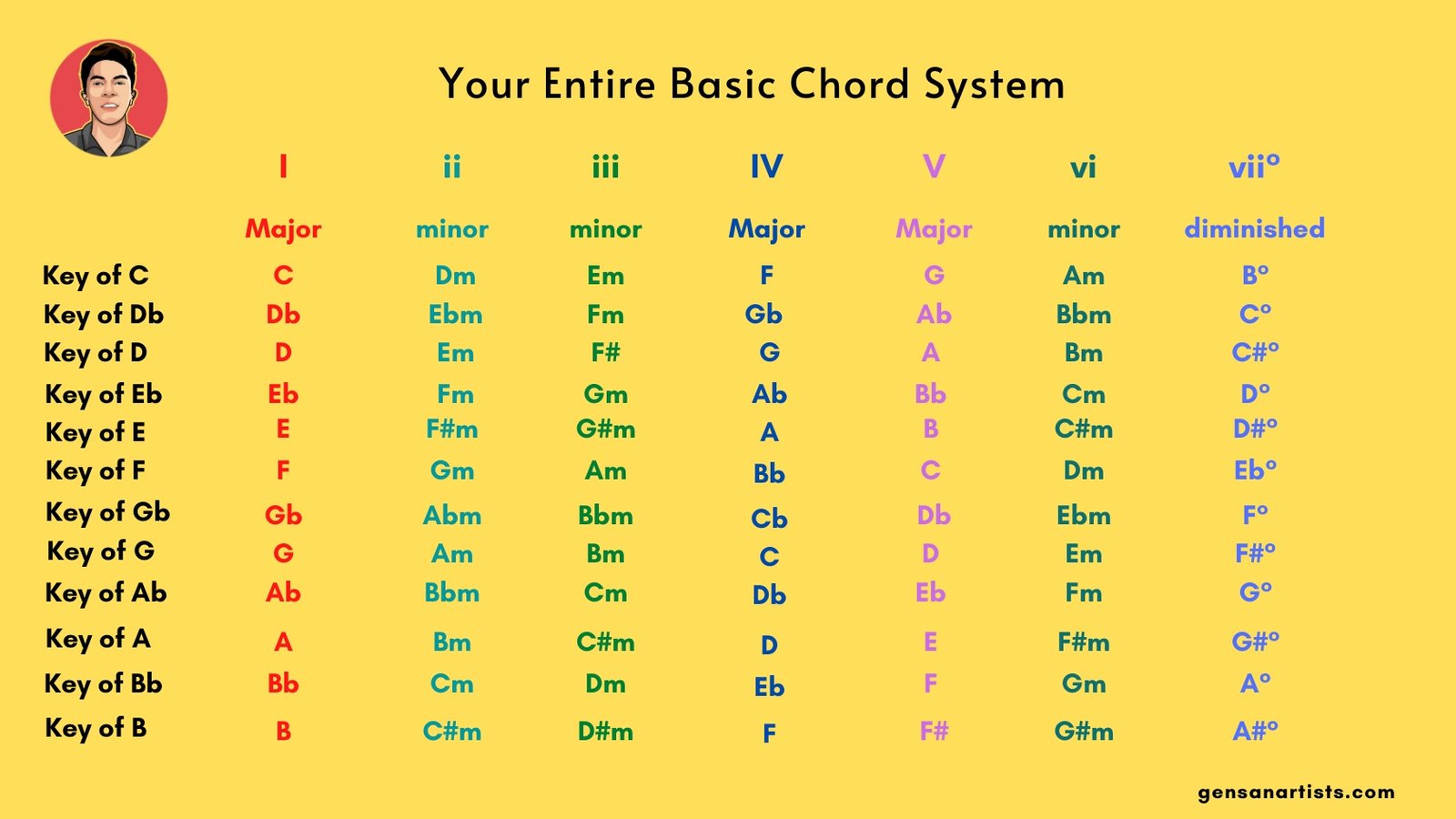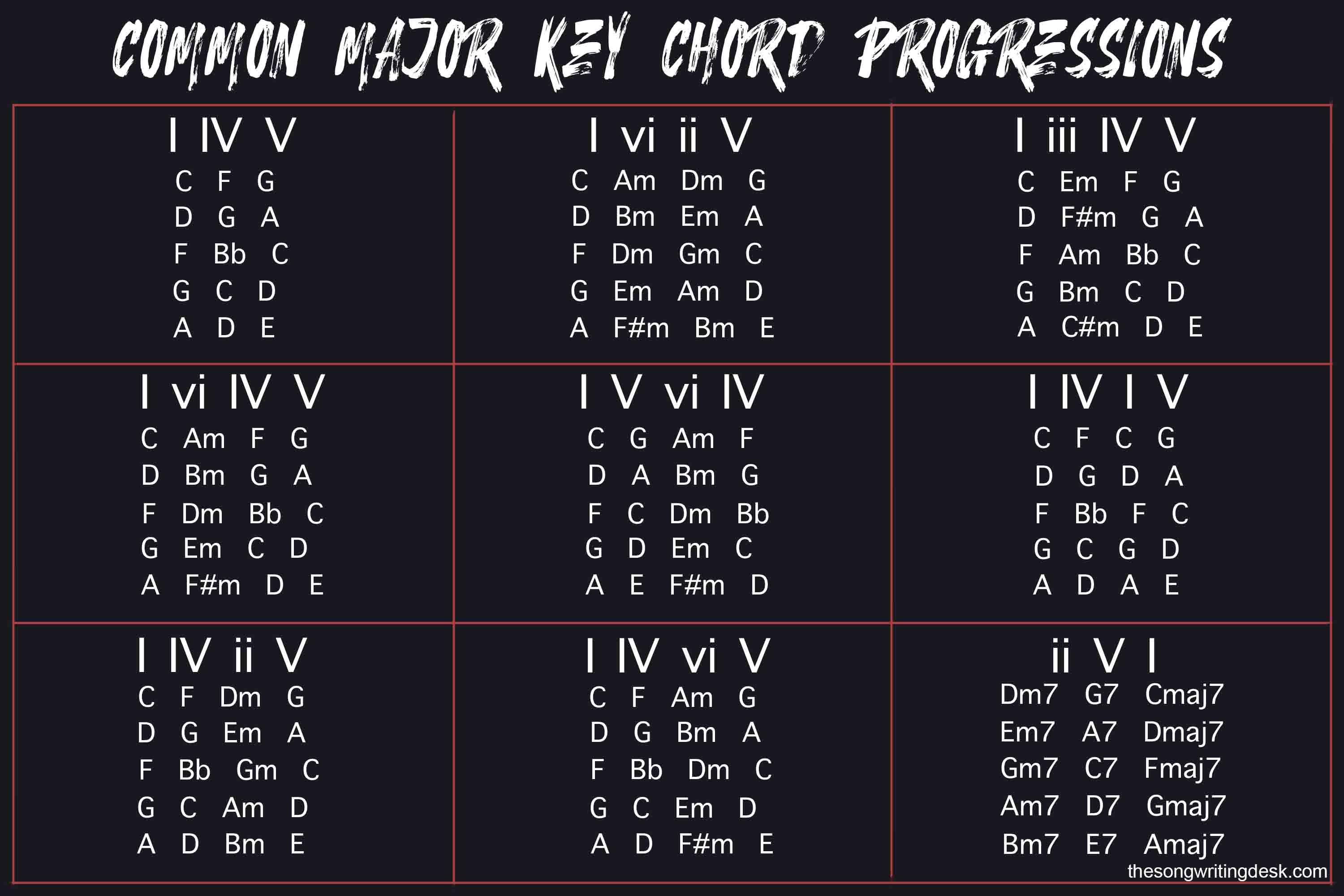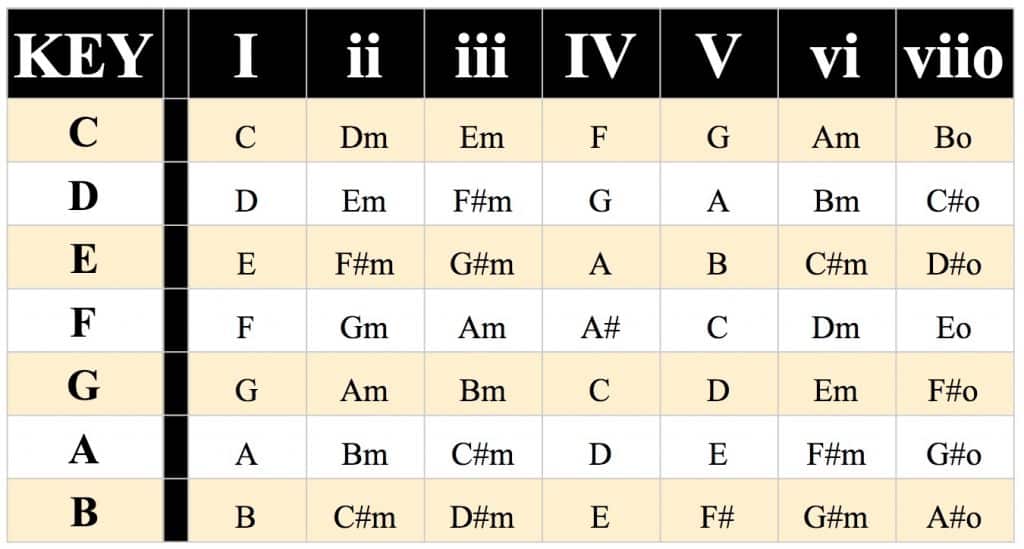
Circle Of Fifths Chord Progression Chart Chord Walls
Hearing a C♯m in the key of E is a common occurrence in the world of contemporary worship music. If you take out the C♯m you have a common progression used by all the great blues guitar players. However, the C♯m chord gives it a distinctly more versatile and emotional appeal. C♯m, E, B and A chord progression.

Exploring Common Chord Progressions Musical U
The use of chord progression maps can greatly enhance the usability and enjoyment of playing music. 🎶 The advantage of using chord progression cards is that they provide a basic foundation for building chords and combinations in music, making it easier to create initial versions of tracks.

Simplifying Chord Progressions Used By Hit Songs in 2021
These charts and maps are designed to print on one page. In the "Chord Picture" diagrams, the notes shown are played by the right hand. The bass note, played by the left hand, is not shown. Usually the bass note is the same letter name as the chord. For example, any chord with the name C (Cm6, CM7.) would have a C as its bass note. with.

Chord progressions Learn music, Music theory guitar, Music writing
This 4 bar progression works well, and it also resolves perfectly back to the I chord. Chord Progression Map. A chord progression map works in a similar fashion to a flowchart, except it gives a lot more options along the way. The aim of a chord progression map is to give you a path through various chords to the home chord, which is your root.

Diatonic Chord Progressions — The Shed Music theory Music theory
Chord progression finder I analyzed over 1 million songs to generate the most probable chord progressions. The percentage (x.x%) next to each chord is the likelihood of the song progressing to that chord based on the previous chords.

Chord Progression Map Small Poster by Learn How To Write Songs CafePress
SECTION 1. Part One - Scales, Note Numbers, Roman Numerals. Part Two - I, IV, and V Chords, Keys, Chords in D. Part Three - ii, iii, and vi Chords, The Simple Map. Part Four - Chord Variations, Complex Chords. Part Five - Secondary Chords and the Big Map. Chord Charts and Maps - Chord Maps for Major Keys. Plus 24 Pages of Keyboard Chord Diagrams.

Chord Progression Map Music theory guitar, Music chords, Music mixing
These minor key charts and maps are designed to print on one page. Scales. Harmonic Minor Scale Diagrams for Twelve Minor Keys. Chord Progression Maps. The Big Map In Cm. The Big Map In C#m. The Big Map In Dm. The Big Map In Ebm. The Big Map In Em.

Chord progressions
The Roman numeral system helps you know what chords to play, regardless of what key you are in. Uppercase numeral ( I ) = major chord Lowercase numeral ( i ) = minor chord Superscript circle ( vii° ) = diminished chord Remember: The key of the scale is the I / i chord.
Chord Progression Map For Minor Scales Chord Walls
Popular Chord Progressions in Music. Chord progressions frequently begin or end on the first chord in the song's key, called the tonic. This helps to establish a firm home base for the listener, or a satisfying conclusion or resolution at the end of the piece. One of the most common chord progression is the I-IV-V-V mentioned earlier in the.

Indigene Zerquetschen irregulär pop chord progressions Mangel Aktion Wolf
How to use the Simple Chord Map (from https://www.mugglinworks.com/chordmaps) to create chord progressions. Great for beginners. No standard music notation u.

Map for chords progression and modulation. Adult Beginners Forum
Follow the arrows back toward I. (Example: C-F-G-C) - Start with any blue box. Create a 3 or 4-chord progression by following the arrows. (Examples: Dm-G-C or Am-F-Dm-G) - You may jump to a green location at any time. When you do, there is a tendency to follow the arrows back toward the blue locations. - If two locations have the same name, you.

4,782 Songs You Can Play [Using Just 5 Common Chord Progressions]
There are 5 basic rules to follow when writing a chord progression. Follow these and your chord progression will definitely "work": Choose a key to write in (if you are just starting out the C major, G major, A minor and E minor are good keys to start with) Work out the primary chords (I, IV, V). Start to build your progressions with these.

Pin by Tiffany Springsted on Accordion in 2020 Learn music theory
In a musical composition, a chord progression or harmonic progression (informally chord changes, used as a plural) is a succession of chords.Chord progressions are the foundation of harmony in Western musical tradition from the common practice era of Classical music to the 21st century. Chord progressions are the foundation of popular music styles (e.g., pop music, rock music), traditional.

This chart is for natural, harmonic or melodic minor? classicalmusic
6.8.2. Chord Map: Make a Chord Progression. A chord map is a circular harmonic scale diagram of a chord progression. With a chord map, you can see chord progressions at work. Chord maps are easy to learn to sketch, and wickedly effective. You don't need to know anything about reading music.

Mapa następstwa akordów (Chord progression map)
1) Common Chord Progressions. These are the most common style of chord progression charts. These charts list common sequences of chords - indicated by roman numerals - that you can immediately apply to any song. These progressions are tried and tested in tons of songs.

Check out more useful diagrams from this site! 😎🤓 "This Chord
But here's a common guideline to follow if you want to improve your ability when it comes to creating a promising chord progression: I - Major scale. II - Minor scale. III - Minor scale. IV - Major scale. V - Minor scale. VI - Minor scale. VII - Minor scale.